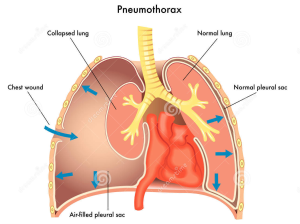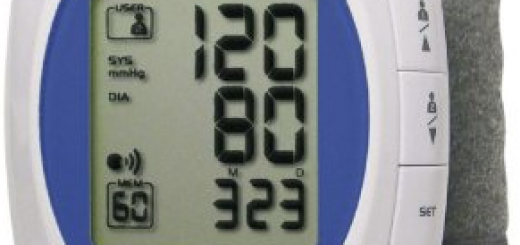What is a pneumothorax? A first aid guide
‘Pneumo’ means air (as in pneumatic) and ‘thorax’ means chest, so pneumothorax simply means ‘air in the chest’. However it is not air in the normal anatomy of the air passages, but air in the pleural cavity.
As result of underlying disease in the lung or injury such as stab wound or a gunshot wound, air enters the pleural cavity from either the lung or through a hole in the chest wall. Each time the casualty breathes in, air enters this cavity.
As air accumulates within the pleural cavity, the lung underneath collapses.
Often the layers of the chest wall form a valve, so that air can enter the cavity but cannot exit via the same route. This causes tension within the pleural cavity and is called a tension pneumothorax, which is a medical emergency. If blood is also present in the cavity it is called a hemothorax.
If air escapes into the tissues under the skin there may be a crackling feeling like ‘bubble-wrap’.
Recognition of a pneumothorax
- History of the incident.
- Obvious chest wound.
- If an open pneumothorax is present, it is common to hear air being sucked into the pleural cavity.
- Shortness of breath which increases as the normal lung collapses.
- Distress as a result of the difficulty with breathing.
- If a tension pneumothorax is present, there will be rapid deterioration as the underlying lung quickly collapses.
- Although the tension pneumothrax may be only on one side, pressure can build up within the chest so that the opposite lung also collapses. This leads to very rapid deterioration of the casualty’s condition and an inability to breathe.






If we were to witness a pneumothorax, besides 999, what could we do to help in an emergency care role?